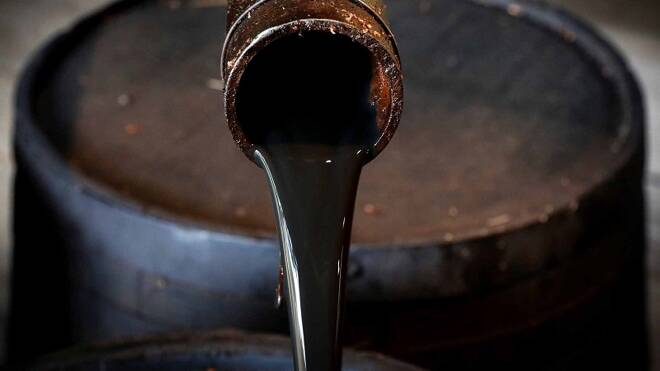Advertisement
Advertisement
Oil Price Fundamental Daily Forecast – Global Recovery, Demand Optimism, Weaker Dollar Providing Support
By:
“Fundamentals look decidedly stronger,” the IEA said in its monthly report.
In this article:
U.S. West Texas Intermediate and international-benchmark Brent crude oil futures are trading slightly lower at the mid-session on Thursday after clawing back most of their earlier losses. The selling pressure wasn’t that notable with the markets still hovering near their March 18 highs.
Helping to put a lid on prices may have been concerns over rising global supplies despite this week’s U.S. crude oil draw. U.S. production is expected to rise now that prices have stabilized near pre-pandemic levels and Iran may start releasing more supply. Earlier in the month, OPEC and its allies agreed to start increasing output gradually in May, June and July.
At 15:39 GMT, June WTI crude oil is trading $63.13, down $0.09 or -0.14% and June Brent crude oil is at $66.59, up $0.01 or +0.02%.
Despite the supply concerns, the market is being well-supported by numerous factors such as a favorable outlook for the global economy, greater demand for riskier assets and the weaker U.S. Dollar.
Support is also coming from the news that the International Energy Agency (IEA) and OPEC upwardly revised their global oil demand growth forecasts for 2021 this week to 5.7 million barrels per day (bpd) and 5.95 million bpd respectively.
IEA Ups Oil Demand Forecast as Vaccinations Brighten Outlook
Vaccine rollouts are brightening the outlook for global oil demand, the International Energy Agency (EIA) said on Wednesday, though rising cases in some major oil-consuming countries show a recovery may be fragile.
“Fundamentals look decidedly stronger,” the IEA said in its monthly report.
“The massive overhang in global oil inventories that built up during last year’s COVID-19 demand shock is being worked off, vaccine campaigns are gathering pace and the global economy appears to be on a better footing.’
Citing rising cases in Europe, Brazil and the United States, the Paris-based watchdog said it remained concerned about new waves of the virus derailing progress.
Still, the IEA predicted global oil demand and supply were set to re-balance in the second half of the year and that producers may then need to pump 2 million barrels per day more to meet the expected demand.
OPEC and allies like Russia, a group known as OPEC+, would likely prove capable of tailoring its output to demand whether the virus is tamed or not, the IEA added.
“The bloc’s monthly calibration of supply may give it the flexibility to meet incremental demand by ramping up swiftly or adjusting output lower should the demand recovery fail to keep pace.”
The IEA said commercial oil stored in OECD countries fell for a seventh consecutive month in February, signaling a rise in demand and increased imports in the near future.
Less developed countries faced a steeper climb out of the demand crater created by COVID-19, the IEA warned, as the differences between countries with prompt access to the vaccine and those without become more pronounced.
“Some emerging countries with lower access are in a more difficult situation, with likely new COVID waves slowing economic activity and mobility,” the IEA said.
“The situation is currently deteriorating sharply in some large non-QECD oil consumers (Brazil, Iran and India).”
For a look at all of today’s economic events, check out our economic calendar.
About the Author
James Hyerczykauthor
James is a Florida-based technical analyst, market researcher, educator and trader with 35+ years of experience. He is an expert in the area of patterns, price and time analysis as it applies to futures, Forex, and stocks.
Did you find this article useful?
Latest news and analysis
Advertisement
